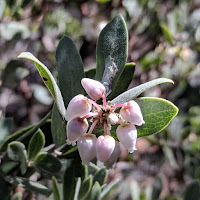I recently had the opportunity do do some volunteer gardening with my workmates at the Dublin Heritage Park and Museums in Dublin, California. We worked with Master Gardeners Jim and Sue, who keep the Park in great shape and know a lot about the dairy farming history of the Tri-Valley area.
Our mission was to spruce up the area around the Murray Schoolhouse Museum (a former one-room schoolhouse) for spring, and plant some flowers. I manned a rake for most of my time, gathering up dead leaves and dead branches from winter storms. We had a great team of workers, and had fun while we worked. After our labor, we got a personal tour around the grounds, and of the old Kolb farmhouse, a craftsman style bungalow built in the early 1900s. I'll share more about Heritage Park in later posts!
 |
| Spring spruce-up around the Museum at Heritage Park in Dublin, California. The planters are old wooden watering troughs from the farm. |
Our mission was to spruce up the area around the Murray Schoolhouse Museum (a former one-room schoolhouse) for spring, and plant some flowers. I manned a rake for most of my time, gathering up dead leaves and dead branches from winter storms. We had a great team of workers, and had fun while we worked. After our labor, we got a personal tour around the grounds, and of the old Kolb farmhouse, a craftsman style bungalow built in the early 1900s. I'll share more about Heritage Park in later posts!


















































